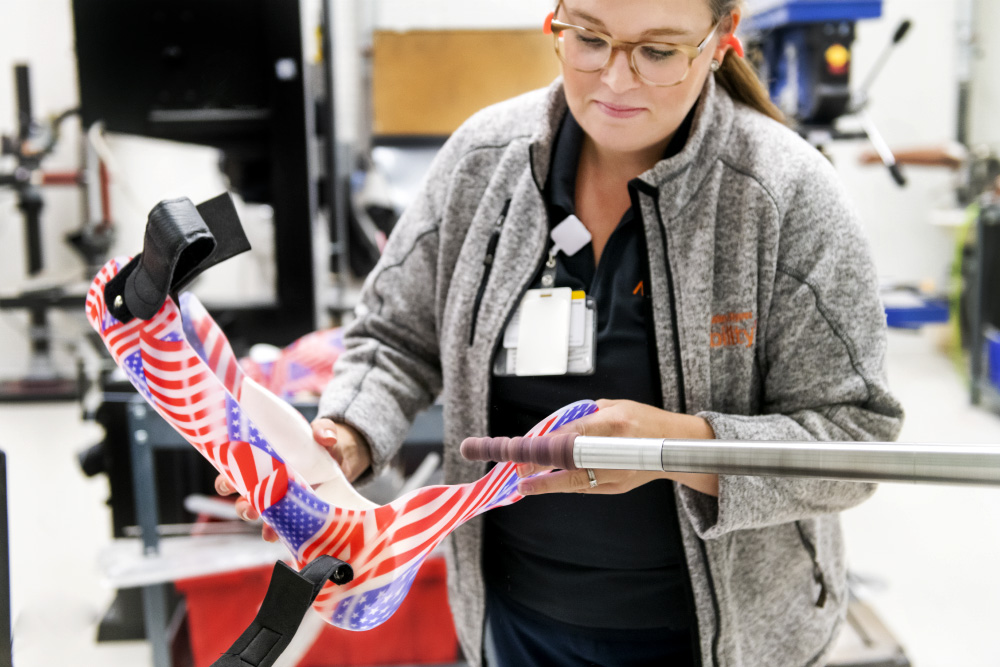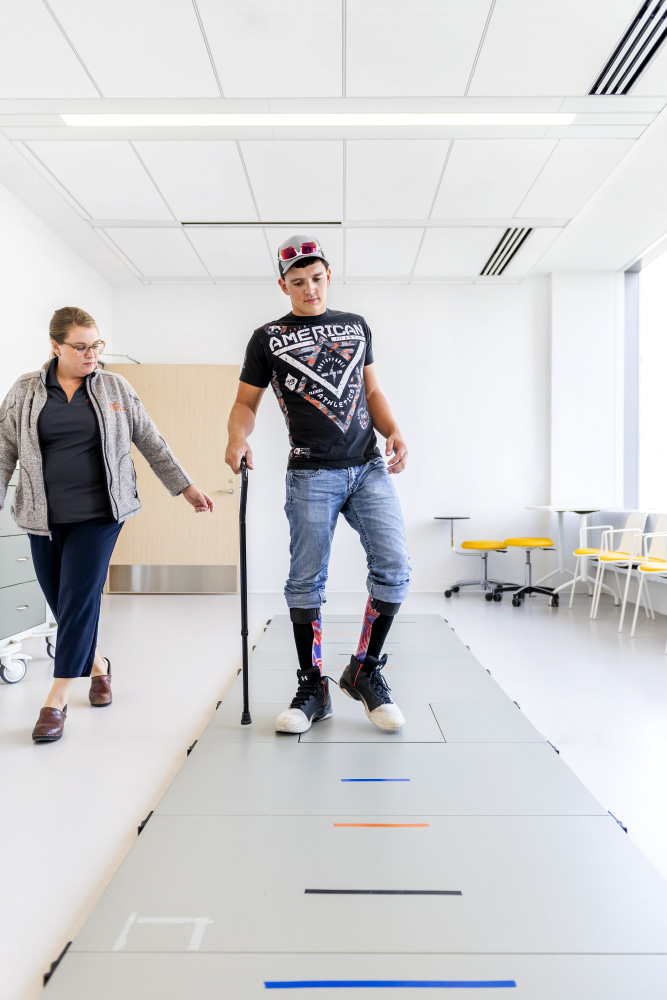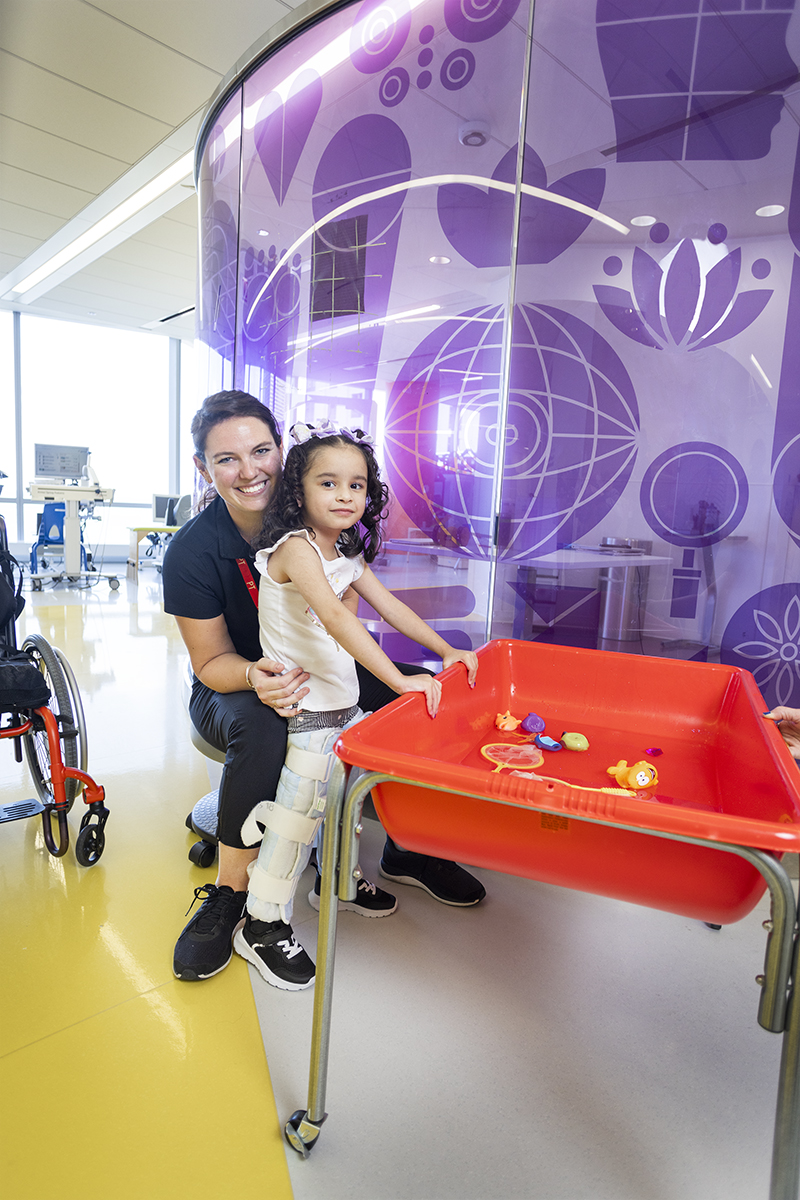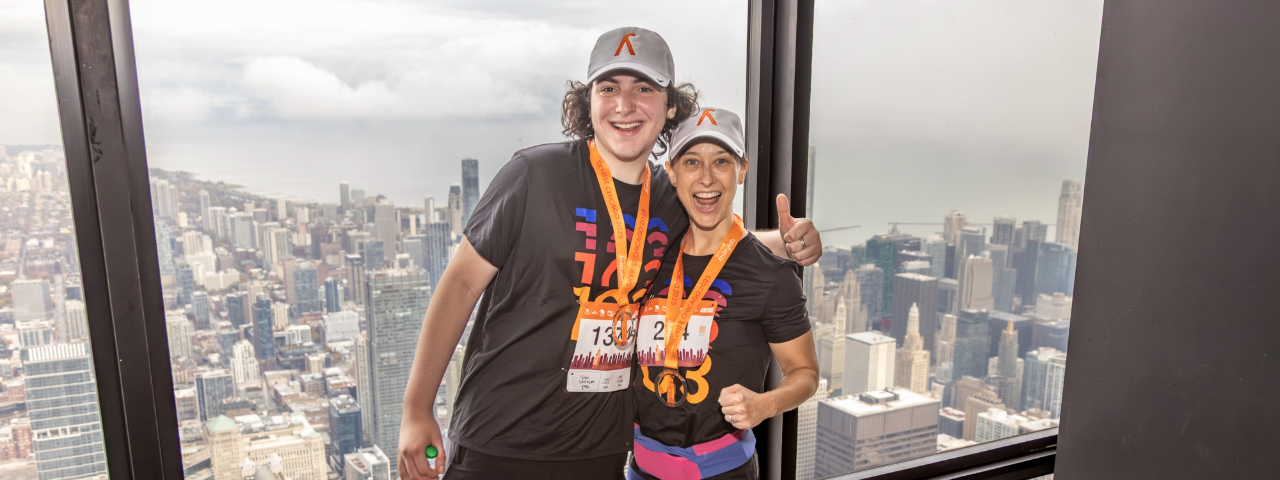Body
When it comes to orthotics, the numerous technical terms and acronyms can be daunting for a patient.
To help patients navigate their journey, Shirley Ryan AbilityLab continues its guide to common terminology.
Orthosis
Body
An orthosis — often called a brace — helps to align or support a weak part of the body. Orthotic devices are beneficial to patients who are born with conditions such as cerebral palsy or spina bifida, or who are recovering from any condition that affects movement in the arms, legs or spine — including stroke, spinal cord injury or traumatic brain injury.
Orthoses provide balance and stability; help to relieve pain; improve posture and alignment; reduce risk of injury; and aid in mobility and functional participation in activities of daily living.

Types of Orthoses
Body
Different types of orthoses are named after the joints they cross in the body — and are commonly referred to by an acronym. For example, an AFO, or ankle-foot orthosis, is an ankle brace.
Other common orthoses include:
- FO: Foot orthosis, or a foot insert
- KAFO: Knee-ankle-foot orthosis, or a full leg brace
- KO: Knee orthosis, or a knee brace
- LSO: Lumbar sacral orthosis, a lower-back brace or spinal brace
- TLSO: Thoracic lumbar sacral orthosis, a full back brace or spinal brace
- WHO: Wrist-hand orthosis, or a wrist brace
Technologically Advanced Orthoses
Body
As the field of orthotics has advanced, so has technology. Several advanced orthoses are available for patients, including:
- Functional electric stimulation (FES) orthoses: These devices aid in stimulating the peroneal nerve, located below the knee, for patients experiencing foot drop.
- Stance-controlled KAFOs: These advanced KAFOs have a knee joint that remains locked during the stance phase of gait (e.g., when the leg is on the ground) and unlocks during the swing phase of gait (when the leg is unweighted and advancing in the step).
- Microprocessor KAFOs: Microprocessor is a fancy word for computer-controlled. A microprocessor KAFO is configured to each individual to provide support during certain phases of walking and aid in motion or mobility during other phases.

Certified Prosthetist Orthotist (CPO)
Body
Patients often work with a “CPO” when they receive an orthosis, which stands for certified prosthetist orthotist.
These healthcare professionals specialize in designing and fitting orthotic and prosthetic devices for patients with varying abilities. They work directly with patients and assess their strength, range of motion, lifestyle and desired functional activities to design a device that is specific to a patient and their goals.
Some clinicians may be certified specifically in a single discipline — as a certified prosthetist (CP) or a certified orthotist (CO). At Shirley Ryan AbilityLab, all CPOs, COs and CPs are certified by the American Board for Certification in Orthotics, Prosthetics & Pedorthics, as well as licensed by the State of Illinois.
About Orthotics at Shirley Ryan AbilityLab
Body
Specializing in designing and fitting custom devices for both adults and children, Shirley Ryan AbilityLab has deep expertise in complex orthoses, including but not limited to:
- Custom ankle foot orthoses using tuning principles
- Custom knee-ankle-foot orthoses including stance-controlled devices
- Microprocessor knee-ankle-foot orthoses
- Functional electrical stimulation (FES) devices for foot drop
- Reciprocating gait orthoses
- Custom silicone orthoses

Through a multidisciplinary approach, Shirley Ryan AbilityLab’s team collaborates with patients to provide the right orthosis for their individual ability goals. Services are available for patients across Shirley Ryan AbilityLab’s continuum of care: inpatient, DayRehab and outpatient locations in downtown Chicago and throughout the suburbs.

